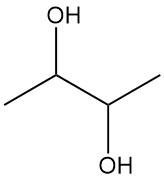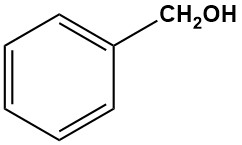Butanol: Properties, Reactions, Production and Uses
Butanol, also known as n-butanol or butan-1-ol, is a primary alcohol with the chemical formula C4H9OH. It's a colorless liquid with a strong, unpleasant odor, similar to that of burnt whiskey.
Butanol, also known as n-butanol or butan-1-ol, is a primary alcohol with the chemical formula C4H9OH. It's a colorless liquid with a strong, unpleasant odor, similar to that of burnt whiskey.

1,2-Butanediol, also known as 1,2-butylene glycol, is an organic compound (diol) with the formula HOCH2(HO)CHCH2CH3. It is a colorless, viscous liquid with a slight odor.

2,3-Butanediol (also known as 2,3-butylene glycol) is an organic compound with the formula C₄H₁₀O₂. It is a colorless, viscous liquid that is miscible with water in all proportions. 2,3-Butanediol is a vic-diol, which means that the two hydroxyl groups are located on adjacent carbon atoms.

1,4-Butynediol or 2-butyne-1,4-diol is an organic compound that is both an alkyne and a diol with the formula C4H6O2. It is a colorless, hygroscopic solid that is soluble in water and polar organic solvents.

1,3-Butadiene is a colorless gas with a gasoline-like odor. It is the simplest member of the series of conjugated dienes, which contain the structure C=C-C=C, the C being carbon.

Benzylamine is an organic compound with the chemical formula C6H5CH2NH2. It is a colorless liquid with a characteristic amine odor. It is a primary amine with a benzene ring attached to it.

Benzyl alcohol is the simplest and most important industrial aromatic alcohol, with the chemical formula C6H5CH2OH. It is a colorless liquid at room temperature with a faint, pleasant odor that is slightly soluble in water but miscible with many organic solvents.

Benzene is a single-ring aromatic compound with the formula C6H6. It is a colorless, flammable liquid with a sweet odor. Benzene is thermally stable and chemically reactive, making it a valuable precursor to many other chemicals.

1,4-Benzoquinone, also commonly known as para-benzoquinone or simply quinone, is an organic compound with the formula C6H4O2. It appears as bright yellow crystals with a pungent odor similar to chlorine or bleach.

Benzenesulfonic acid is an organic molecule with the formula C6H5SO3H. It is a white crystals or waxy solid that is soluble in water and ethanol.

Benzidine is an organic compound with the chemical formula C12H12N2. It is a rayish-yellow, reddish-gray, or white crystalline solid that is slightly soluble in water.

Benzaldehyde is the most important aromatic aldehyde, both in nature and industry, with the formula C7H6O. It is a colorless liquid with a distinctive odor resembling bitter almond.